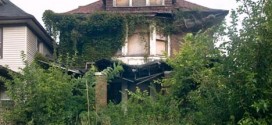(September 17, 2009 Release)
Highlights
• Residential housing construction registered 598,000 units in August, up 1.5 percent from July. Total starts are hovering near highest levels since November of last year.
• The 3 month average is 592,000 which has risen during the past three months.
• The increase in starts were due to primarily to a 25.3 percent rise in multi-family starts. Single family starts were down 3.0 percent in August.
• Building permits rose 2.7 percent in August to 579,000, which portends favorably for future residential construction activity.
Source: Census Bureau
| New Residential Construction (Mil. SAAR) | ||||
| Aug 09 | July 09 | 3 mo Avg | 6 mo Avg | |
| Housing Starts | 0.598 | 0.589 | 0.592 | 0.555 |
| % change | 1.50 | -0.2 | ||
| Single Family | 0.479 | 0.494 | 0.484 | 0.435 |
| % change | -3.0 | 3.3 | ||
| Multi-Family | 0.119 | 0.095 | 0.109 | 0.120 |
| % change | 25.3 | -15.2 | ||
| Northeast | 0.078 | 0.063 | 0.074 | 0.067 |
| % change | 23.8 | -22.2 | ||
| Midwest | 0.114 | 0.113 | 0.111 | 0.099 |
| % change | 0.9 | 5.6 | ||
| South | 0.279 | 0.286 | 0.280 | 0.270 |
| % change | -2.5 | 3.6 | ||
| West | 0.127 | 0.127 | 0.127 | 0.119 |
| % change | 0.0 | 0.8 | ||
| Total Building Permits | 0.579 | 0.564 | 0.571 | 0.540 |
| % change | 2.7 | -1.1 | ||
Analysis
The modest rise in housing starts was due to a relatively large increase in multifamily starts, while single family starts fell 3.0 percent in August. Single family starts had risen for five consecutive months before falling in August. Single family starts are now 22 percent below the pace of a year ago. On a more positive note, total permits rose by 2.7 percent in August. H owever, permits are 32 percent below its year ago pace. Multlifamily starts were up 25 percent for the month and continues to exhibit volatility from month to month.
New residential construction activity has been trending slightly upward since bottoming in January of this year. Thus, it appears that homebuilding has stabilized somewhat. Today’s housing starts data suggests that the housing sector may be improving. With the exception of August, single family starts have dominated residential construction activity throughout the year which is a healthy sign for the residential building industry. Furthermore, the annualized pace of housing permits has made modest improvements throught the year, another favorable sign for future residential construction activity.
All three major housing measures- starts, existing home sales and new home sales- are above their cyclical lows. And even though housing inventories remain excessive, the supply of homes on market has slowly come down. In fact, the new homes inventory levels are within a healthy range under normal housing conditions.
Looking forward, caution must be exercised with any outlook for new residential construction. The federal homebuyer tax credit expires in December which may slow homebuilding somewhat. In addition, we are concerned about the possibility of a worsening in the foreclosure situation. A substantial amount of option ARM and interest only mortgage loans are due to reset within the next two years which is likely to add a considerable number of foreclosure properties to an already building pipeline. Mounting foreclosures are expected to inhibit new home building in the near terrm. On balance, there are greater downside risks than upside potential in the new residential construction marketplace. Although housing starts have turned up from its bottom set earlier this year, we continue to believe that residential contruction activity will remain weak and below potential trend for the next several years.
 RealEstateEconomyWatch.com Insight and Intelligence on Residential Real Estate
RealEstateEconomyWatch.com Insight and Intelligence on Residential Real Estate

